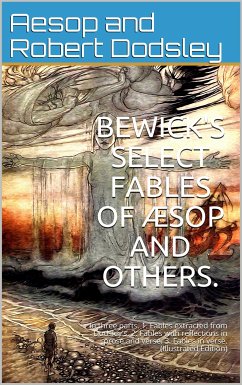Aesop's Fables, or the Aesopica, is a collection of fables credited to Aesop, a slave and storyteller believed to have lived in ancient Greece between 620 and 564 BCE. Of diverse origins, the stories associated with his name have descended to modern times through a number of sources and continue to be reinterpreted in different verbal registers and in popular as well as artistic media.
The fables originally belonged to the oral tradition and were not collected for some three centuries after Aesop's death. By that time a variety of other stories, jokes and proverbs were being ascribed to him, although some of that material was from sources earlier than him or came from beyond the Greek cultural sphere. The process of inclusion has continued until the present, with some of the fables unrecorded before the Late Middle Ages and others arriving from outside Europe. The process is continuous and new stories are still being added to the Aesop corpus, even when they are demonstrably more recent work and sometimes from known authors.
In Classical times there were various theorists who tried to differentiate these fables from other kinds of narration. They had to be short and unaffected; in addition, they are fictitious, useful to life and true to nature. In them could be found talking animals and plants, although humans interacting only with humans figure in a few. Typically they might begin with a contextual introduction, followed by the story, often with the moral underlined at the end. Setting the context was often necessary as a guide to the story's interpretation, as in the case of the political meaning of The Frogs Who Desired a King and The Frogs and the Sun.
The fables originally belonged to the oral tradition and were not collected for some three centuries after Aesop's death. By that time a variety of other stories, jokes and proverbs were being ascribed to him, although some of that material was from sources earlier than him or came from beyond the Greek cultural sphere. The process of inclusion has continued until the present, with some of the fables unrecorded before the Late Middle Ages and others arriving from outside Europe. The process is continuous and new stories are still being added to the Aesop corpus, even when they are demonstrably more recent work and sometimes from known authors.
In Classical times there were various theorists who tried to differentiate these fables from other kinds of narration. They had to be short and unaffected; in addition, they are fictitious, useful to life and true to nature. In them could be found talking animals and plants, although humans interacting only with humans figure in a few. Typically they might begin with a contextual introduction, followed by the story, often with the moral underlined at the end. Setting the context was often necessary as a guide to the story's interpretation, as in the case of the political meaning of The Frogs Who Desired a King and The Frogs and the Sun.








